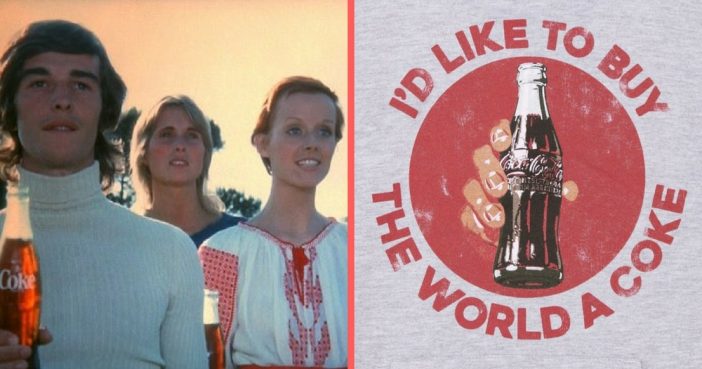
The Making Of ‘I’d Like To Buy The World A Coke’

A chord structure and the beginnings of the melody for the song had been written and recorded on a cassette tape, played on a ukulele, the previous year by Roger Greenway and Roger Cook. While waiting for Backer to arrive from Ireland, Billy Davis and Greenway had begun to develop ideas for radio jingles. Greenway pulled out the tape he and Cook had worked on and played a variety of melodies for Davis.
Davis loved one of the melodies and he and Greenway expanded on the melody, added a bridge and wrote a jingle called “Mom, True Love, and Apple Pie.” When Backer finally arrived in London,
The four song writers were all accomplished in their craft. Backer had written the Coca-Cola jingle “Things Go Better with Coke” as well as the jingle for “The Real Thing” Coke campaign. Davis, Cook and Greenaway were songwriters on many hits of the 1960s. Davis wrote Jackie Wilson’s “Reet Petite” and “Lonely Teardrops,” and Cook and Greenaway wrote pop standards including “Long Cool Woman (In A Black Dress)” and “You’ve Got Your Troubles and I’ve Got Mine.”
Working through the night, they crafted the song and, within a few days, Davis produced “I’d Like to Buy the World a Coke” along with two other commercials he wrote with Backer, Cook and Greenaway for The New Seekers. On Feb. 12, 1971, “I’d Like to Buy the World a Coke” was shipped to radio stations around America. While some of the feedback from the Coca-Cola bottlers was not encouraging, many of Billy Davis’s DJ friends from his record business career began to call him. They were saying things like, “I’m getting requests to play your commercial like it was a hit record” and “You should record it as a record.”
:format(jpeg):mode_rgb():quality(90)/discogs-images/R-2150178-1317895060.jpeg.jpg)
Backer put his creative team to work to come up with a visual concept for “I’d Like to Buy the World a Coke.” Out of the many creative ideas, the one that stood out was the one called “The First United Chorus of the World” created by art director Harvey Gabor. This concept featured young people all around the world singing together on a hillside. Backer presented the storyboards to The Coca-Cola Company and Coke advertising manager Ike Herbert approved more than $100,000 to film it.
What ruined two commercial shoots? Click “Next” to find out.